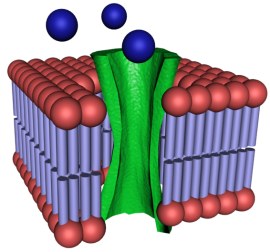
Reading Guide...............................................Chapter 4-1
Reading Guide - Section 4-1 (page 74)
1. When an organism adjusts internally to changing external conditions,
it is called ________________________________
2. Movement across the cell membrane that does not require energy is called
_____________________
3. A difference between a concentration of a substance is called the ___________________________
4. Define diffusion: _________________________________________________________________
5. What kinds of molecules can move across the cell membrane? ______________________________
6. The cell membrane is [ selectively permeable / impermeable ].
7. Name two types of passive transport: __________________ & ____________________________
8. A solution that causes a cell to swell is called: ______________________
9. A solution that causes a cell to shrink is called: _______________________
10. If the cytoplasm and the fluid outside the cell have the same concentration,
it is called _____________
11. What are contractive vacuoles? ___________________________________
12. What type of organisms have contractive vacuoles? _______________________________
13. How do plant and fungus cells keep from bursting? _________________________________
14. In Greek, "hyper" means ______________ and "hypo" means
__________________
15. __________________ Can Help Some Substances Cross the Cell Membrane.
16. Each protein ______________ allows a specific substance to pass
17. _____________ are essential to nerve cells' ability to send electronic signals.
18. In some ion channels, pores can be closed by _______________________.
19. Ion channel gates can open or close in response to ________________________
20. What type of protein carries substances across the cell membrane? _________________
21. Facilitated diffusion is a type of _________________ transport.
22. On the drawing, label the phospholipids bilayer and the carrier protein.
